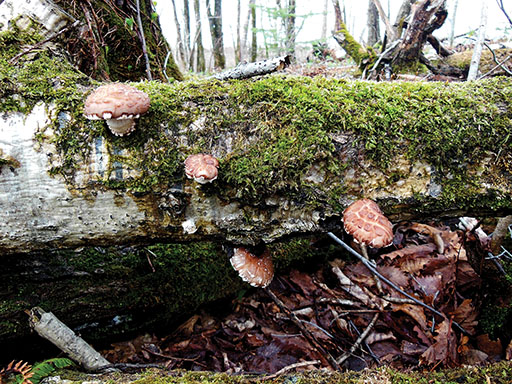5 Food, culture and traditions
Many food recipes are passed down through the generations. Many recipes are also based on particular varieties of plants (e.g. jasmine rice, a variety of Oryza sativa grown in Thailand, Cambodia, Laos and Vietnam) or breeds of animals (e.g. Angus, a breed of cattle, Bos taurus, bred in the counties of Aberdeenshire and Angus in Scotland). Some recipes also derive from particular fungi (e.g. Shiitake, Lentinula edodes, a type of mushroom native to East Asia and served in Japanese miso soup) and even microorganisms (e.g. lactic acid bacteria from genus Lactobacillus play an important role in cheese-making).

Food traditions differ from region to region, and sometimes even household to household, and make use of specific ingredients or a combination of ingredients. The diversity of ingredients used in traditional food is closely linked to ‘agrobiodiversity’. FAO (1999) defines agrobiodiversity as follows:
The variety and variability of animals, plants and micro-organisms that are used directly or indirectly for food and agriculture, including crops, livestock, forestry and fisheries. It comprises the diversity of genetic resources (varieties, breeds) and species used for food, fodder, fibre, fuel and pharmaceuticals. It also includes the diversity of non-harvested species that support production (soil micro-organisms, predators, pollinators), and those in the wider environment that support agro-ecosystems (agricultural, pastoral, forest and aquatic) as well as the diversity of the agro-ecosystems.
According to McCouch et al. (2013), the world depends on fewer than a dozen of approximately 300 000 species of flowering plants for 80% of human calorie intake. A vast genetic diversity that each of these 300 000 species possess therefore remains untapped. McCouch and colleagues (2013) call for a more concerted global effort to make better use of agrobiodiversity in the global food supply. In the following activity, you will explore this agrobiodiversity in eight example landscapes from around the world.
Activity 6 Landscapes for agrobiodiversity
A booklet called ‘Landscapes for Agrobiodiversity’ [Tip: hold Ctrl and click a link to open it in a new tab. (Hide tip)] published by the Platform for Agrobiodiversity Research provides information about agrobiodiversity in eight of the world’s landscapes. These landscapes, all in low-income countries, have protected dozens of varieties of crops used in everyday diets in the UK. Use this booklet to think about the ingredients in a typical UK diet compared with those described in the eight landscapes in low-income countries around the world. For example, you might want to focus on particular crops – such as potato, rice or chilli – to help you compare and contrast the varieties used in a typical diet in high- and low-income countries, or take another approach to addressing this question.
You can use the box below to make notes in preparation for the discussion, if you wish.
Next you will look at the relationship between food and the cultural identity of people.
